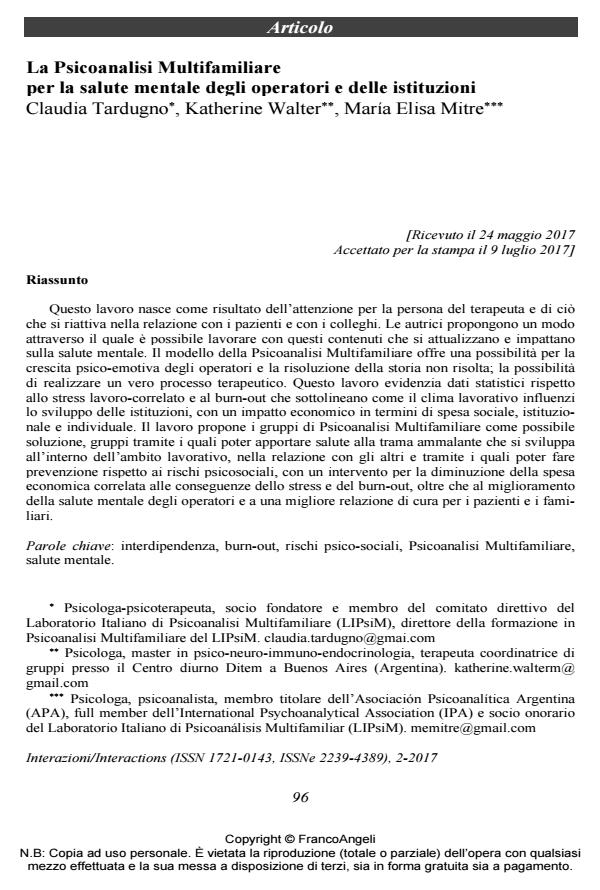Impact of the Multifamily Psychoanalysis Groups on the therapist and on the institutio
Journal title INTERAZIONI
Author/s Claudia Tardugno, Katherine Walter, María Elisa Mitre
Publishing Year 2017 Issue 2017/2
Language Italian Pages 13 P. 96-108 File size 162 KB
DOI 10.3280/INT2017-002009
DOI is like a bar code for intellectual property: to have more infomation
click here
Below, you can see the article first page
If you want to buy this article in PDF format, you can do it, following the instructions to buy download credits

FrancoAngeli is member of Publishers International Linking Association, Inc (PILA), a not-for-profit association which run the CrossRef service enabling links to and from online scholarly content.
This paper arises as a result of the concern for the therapist as a person and everything that is reactivated in his relationship with patients and colleagues. The authors propose a possible way to work with these contents that are updated and have straight impact on their mental health. The Multifamily Psychoanalysis approach offers an opportunity for the psycho-emotional growth of the operator and the resolution of the unresolved history; the possibility of going through a true therapeutic process. This paper provides statistical data about stress and burn-out that show how the working atmosphere affects the development of institutions, With an economic impact in terms of social, institutional and individual spending. The paper proposes the Multifamily Psychoanalysis Groups as a possible solution to this problem, as they bring health to the framework that unfolds in the workplace, in the relationship with others, and to make prevention respect to psychosocial risks, with an intervention for the reduction of the economic expenditure related to the effects of stress and burn-out, as well as the improvement of mental health operators and a better relationship of care for patients and their families.
Keywords: Interdependence, burn-out, psycho-social risks, Multifamily Psychoanalysis Groups, mental health.
Claudia Tardugno, Katherine Walter, María Elisa Mitre, La Psicoanalisi Multifamiliare per la salute mentale degli operatori e delle istituzioni in "INTERAZIONI" 2/2017, pp 96-108, DOI: 10.3280/INT2017-002009